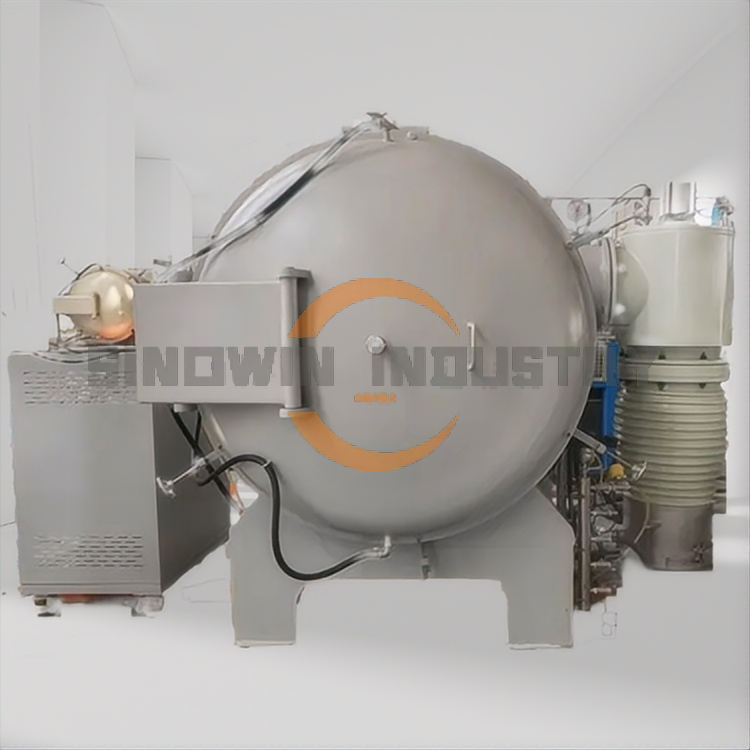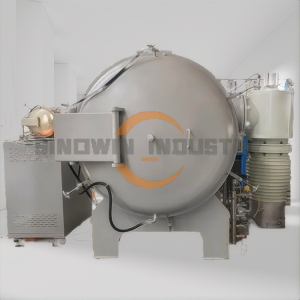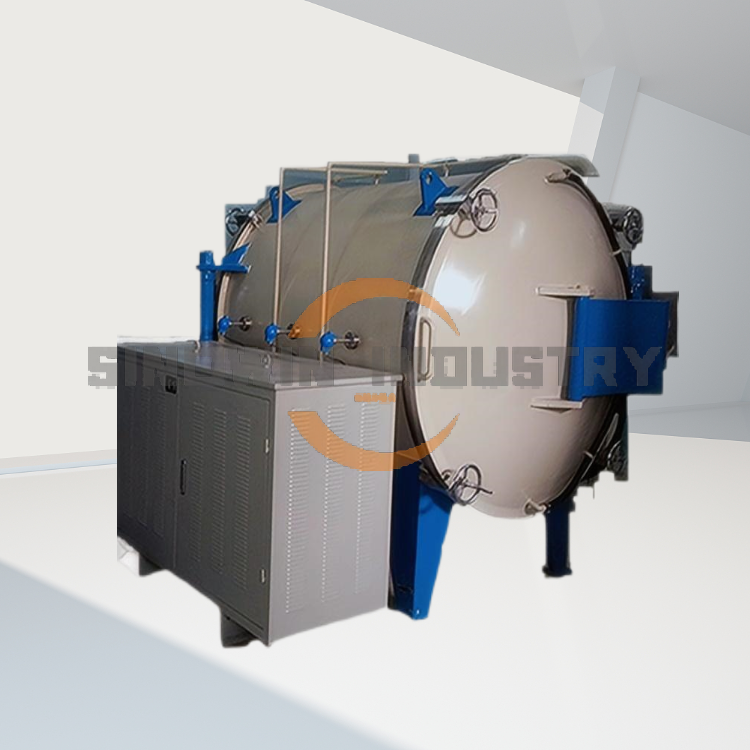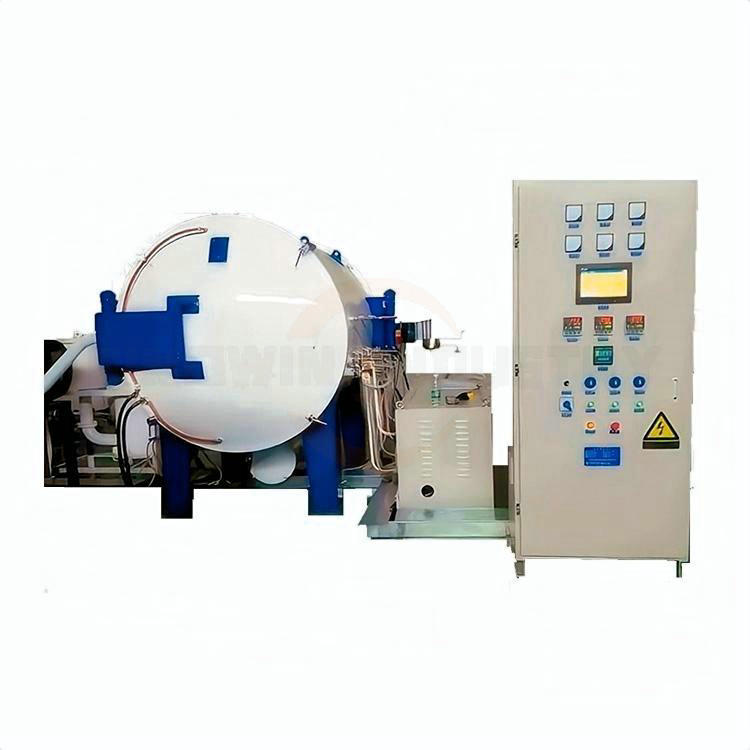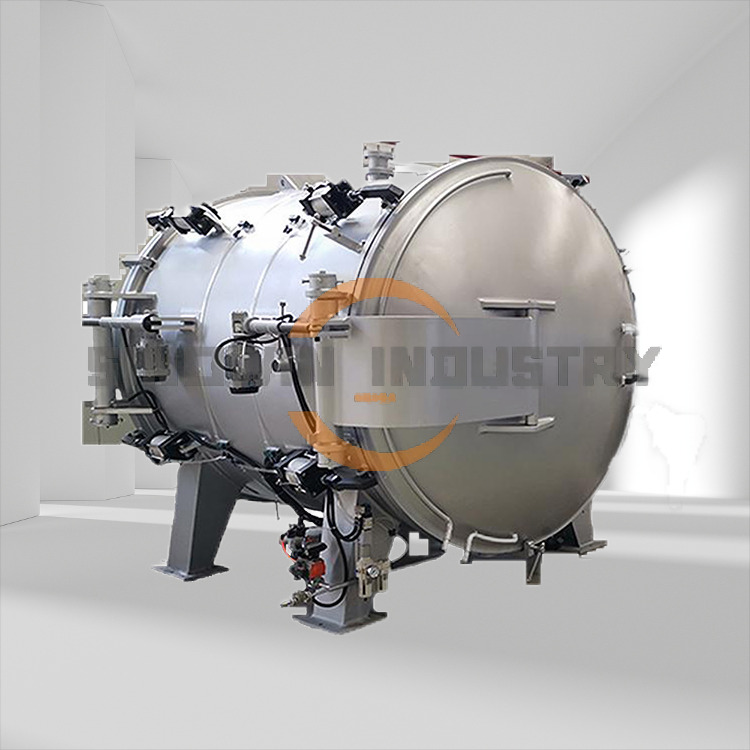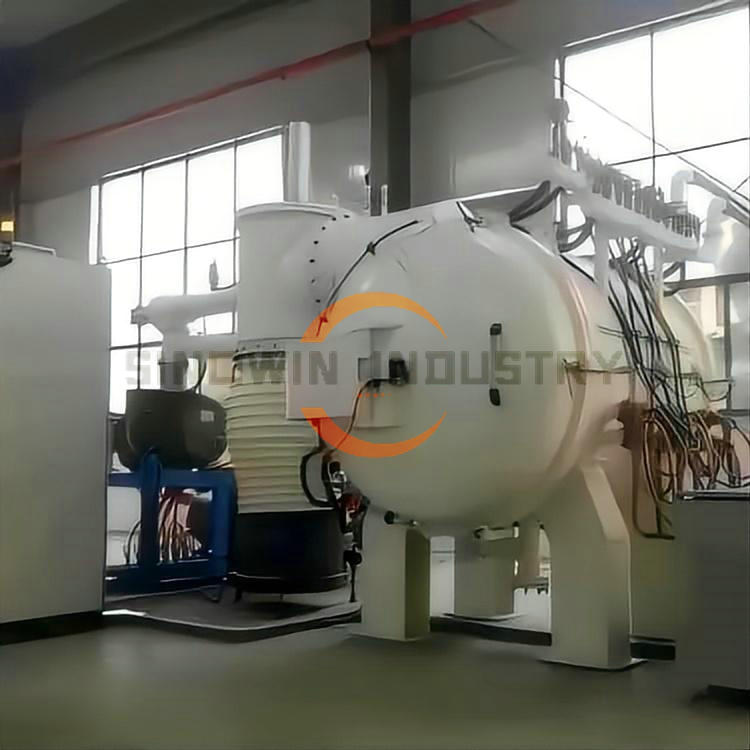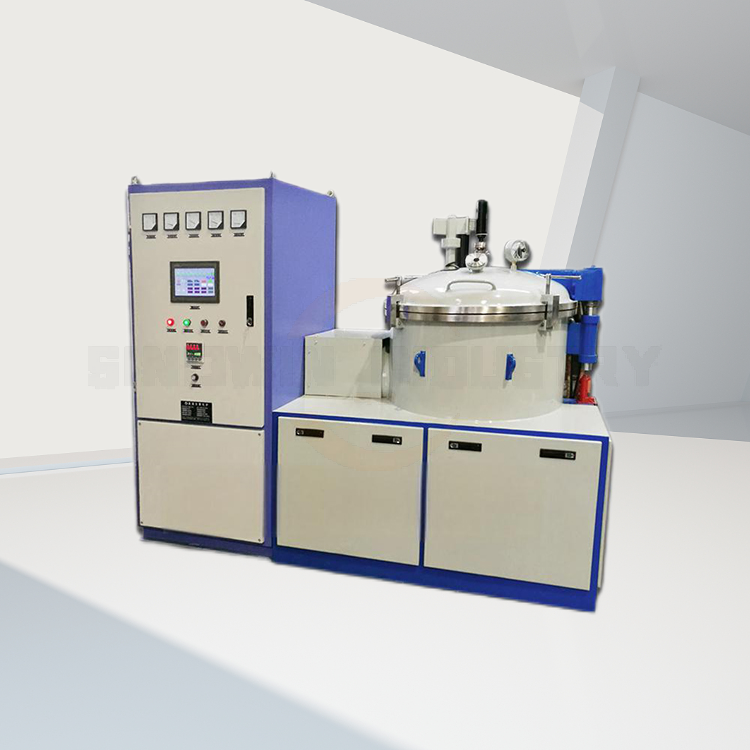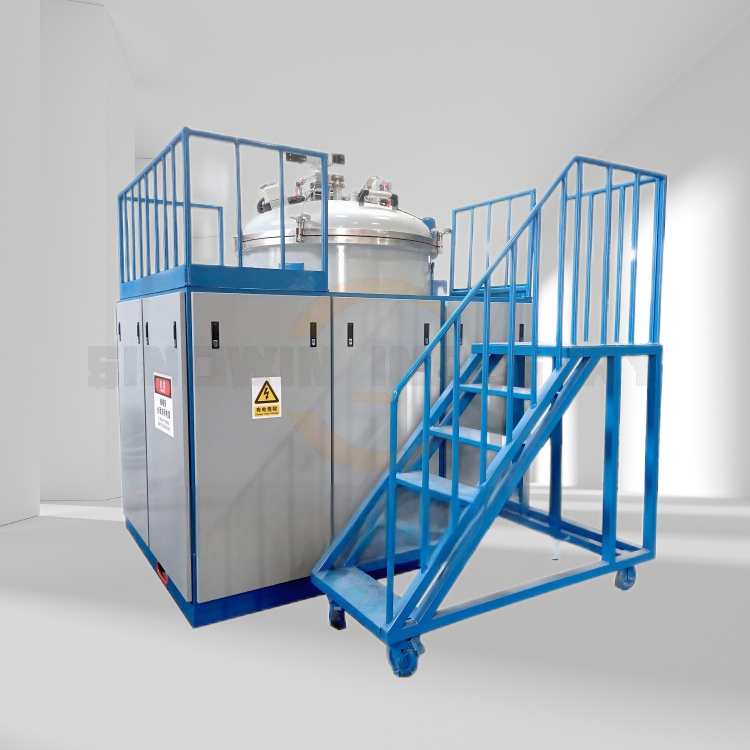Product Description:
The Graphene Graphitization Furnace, designed for high-performance material processing and characterized by its dual structure— is available in both vertical and horizontal configurations. The vertical unit features a direct top-opening lid, while the horizontal model comes equipped with front and rear doors, ensuring versatility to meet your specific needs.
Key Features:
- Construction and Design:
- The furnace body is constructed with a robust double-layer water-cooling system and an inner chamber made from premium 304 stainless steel. This design allows for both vacuum operation and the introduction of protective gases, ensuring optimal conditions for effective graphitization.
- Adjustable Interface:
- Each unit is equipped with vital interfaces including a gas extraction port for vacuum pump connection, electrode flange, infrared temperature measurement hole, and exhaust outlet. The furnace base height is adjustable to accommodate various sensor heights, providing flexibility for different applications.
- Enhanced Operational Efficiency:
- The furnace lid features a manual hydraulic lift with a rotating opening mechanism, making operations more effortless compared to manual wheels. The lid also includes observation windows, temperature measurement ports, and gas inlet openings for comprehensive monitoring and control.
- Advanced Insulation and Crucibles:
- Inside, a reliable insulation layer is combined with high-quality crucibles, sensors, and alumina to facilitate optimal thermal management and efficiency during the graphitization process.
- High-Quality Sensors:
- Our sensors are crafted from premium square copper tubes, ensuring low magnetic leakage and high efficiency. The support brackets for the sensors are made from stainless steel, guaranteeing durability and resistance to high-temperature carbonization.
- Resonance Capacitors:
- The resonant capacitors are designed with water-cooling capabilities and maintain a 30% safety margin, ensuring consistent performance under varying operational conditions.
- Real-Time Temperature Measurement:
- The furnace is equipped with an imported infrared temperature measuring device for real-time monitoring of the temperature at the crucible. The dual-color infrared sensor offers precise measurements even in the presence of smoke, dust, or other particulates.
- Vacuum System:
- The vacuum system comprises a direct-driving mechanical pump, a gas-charging electromagnetic valve, a vacuum butterfly valve, membrane valves, and an efficient piping system. The dual membrane valve setup ensures reliable gas management for process control and vacuum integrity.
- Comprehensive Electrical Control System:
- The temperature control instrument features a 0.1% level intelligent segmented program controller that stores up to 50 heating profiles, offering customizable settings for diverse applications. It includes PLC protection to monitor parameters such as phase loss, water pressure, line integrity, and gas protection, allowing for sequential control and interlocking safeguards to optimize outputs. The system provides alerts for critical conditions, such as water temperatures exceeding 60 degrees and insufficient vacuum levels.
Performance Characteristics:
- Maximum Operating Temperature: Up to 3000°C, with an operational range at 2800°C, suitable for graphite purification tasks.
- Standard configurations: A one-to-two structure is provided with options for more extensive requirements, particularly in graphite purification industries.
- Customizable Dimensions: Common uniform temperature zones include φ600mm × 1600mm and φ500mm × 1300mm, with the ability to customize dimensions per client specifications.
- Temperature Uniformity: Maintains ≤ ±10°C temperature variation with an exceptional precision of ±1°C control.
- Operational Atmosphere: Utilizes vacuum displacement of Ar2 and N2 protection (slight positive pressure).
- Temperature Measurement Accuracy: Features an imported optical infrared thermometer with a range of 1000~3000°C and a precision of 0.3%.
- Safety Features: Includes automatic explosion-proof valves with comprehensive real-time monitoring of water flow and pressure.
- Control Methods: Offers both programmatic and manual temperature control options, ensuring adaptability to various operational scenarios.
Whether you are in research, analysis, or manufacturing, the Graphene Graphitization Furnace supplied from SINOWIN INDUSTRY is your best choice.
Donot hesitate to Contact us today for a quote and transform your scientific journey completely.The Graphene Graphitization Furnace—your ideal solution for high-temperature material processing and graphite transformation.
Parameter of The Graphene Graphitization Furnace:
| Work Size (mm) | Φ200×300 | Φ300×400 | Φ400×1000 | Φ500×1000 | Φ600×1000 | Φ600×1600 |
| Volume(L) | 9 | 28 | 125 | 196 | 282 | 452 |
| Heating Power | 100 KW | 160 KW | 200 KW | 250 KW | 300 KW | 350 KW |
| Frequency | 2000 Hz | 2000 Hz | 2000 Hz | 1500 Hz | 1500 Hz | 1500 Hz |
| Max. Work Temperature | 3000°C | |||||
| Ultra Vacuum | 1.2×10-3 mbar | |||||
| Optional High Vacuum | 5×10-5 mbar | |||||
| Max.temperature rise rate | 15°C/min (RT~1500°C), 10°C/min (1500°C~2500°C), 5°C/min (2500°C~3000°C) | |||||
| Vacuum Pressure | 6.7×10-3 mbar/hr | |||||
| Atmosphere | High Vacuum(optional)/ Vacuum/ Inert Gas(Ar or N2)
Vacuum and high vacuum atmospheres are only allowed below 2200°C |
|||||
| Power | 3P, 380V, 50Hz/60Hz | |||||
| Pressure of the cooling water | 1.5~2.5 bar | |||||
| Water of the cooling water | ≤28 °C | |||||
Q&As of the The Graphene Graphitization Furnace
Q1: What is the maximum temperature the Graphene Graphitization Furnace can reach?
A1: The Graphene Graphitization Furnace can reach a maximum operating temperature of 3000℃. For typical applications, it operates efficiently at a temperature of 2800℃, allowing for effective graphite purification tasks.
Q2: Can I customize the size of the furnace according to my product requirements?
A2: Yes! The furnace is highly customizable. While the standard uniform temperature zone sizes are φ600mm×1600mm and φ500mm×1300mm, we can tailor the dimensions to meet your specific product requirements. Just reach out to us with your needs!
Q3: How precise is the temperature control in the furnace?
A3: The temperature control in the Graphene Graphitization Furnace is exceptionally precise, with a temperature uniformity of ≤±10℃ and a control accuracy of ±1℃. This ensures that your processes can be conducted under stable and reliable thermal conditions.
Q4: What is the working atmosphere of the furnace?
A4: The furnace operates in a protective atmosphere that includes vacuum displacement with Ar2 or N2 gas, maintained at a slightly positive pressure. This ensures a safe working environment for your materials during the graphitization process.
Q5: How is the temperature measured within the furnace?
A5: Temperature measurement is conducted using an imported infrared optical pyrometer, which has a measurement range of 1000℃ to 3000℃ and a precision of 0.3%. This ensures accurate monitoring throughout the heating process.
Q6: Can the furnace accommodate multiple units for high-demand applications?
A6: Absolutely! The standard configuration includes a one-to-two structure (one power supply with two furnace bodies). For industries with higher demands, we can customize a one-to-many structure to facilitate multiple graphite purification processes simultaneously.
Q7: What are the standard operational applications of this furnace?
A7: The Graphene Graphitization Furnace is primarily designed for graphite purification tasks, making it ideal for various applications in high-performance industries.
Whether you are involved in advanced material science or battery production, this furnace can enhance your production capabilities.
Feel free to ask if you have more inquiries regarding Sinowin Industry’s Graphene Graphitization Furnace!
Parameter of The Graphene Graphitization Furnace:
| Work Size (mm) | Φ200×300 | Φ300×400 | Φ400×1000 | Φ500×1000 | Φ600×1000 | Φ600×1600 |
| Volume(L) | 9 | 28 | 125 | 196 | 282 | 452 |
| Heating Power | 100 KW | 160 KW | 200 KW | 250 KW | 300 KW | 350 KW |
| Frequency | 2000 Hz | 2000 Hz | 2000 Hz | 1500 Hz | 1500 Hz | 1500 Hz |
| Max. Work Temperature | 3000°C | |||||
| Ultra Vacuum | 1.2×10-3 mbar | |||||
| Optional High Vacuum | 5×10-5 mbar | |||||
| Max.temperature rise rate | 15°C/min (RT~1500°C), 10°C/min (1500°C~2500°C), 5°C/min (2500°C~3000°C) | |||||
| Vacuum Pressure | 6.7×10-3 mbar/hr | |||||
| Atmosphere | High Vacuum(optional)/ Vacuum/ Inert Gas(Ar or N2)
Vacuum and high vacuum atmospheres are only allowed below 2200°C |
|||||
| Power | 3P, 380V, 50Hz/60Hz | |||||
| Pressure of the cooling water | 1.5~2.5 bar | |||||
| Water of the cooling water | ≤28 °C | |||||
